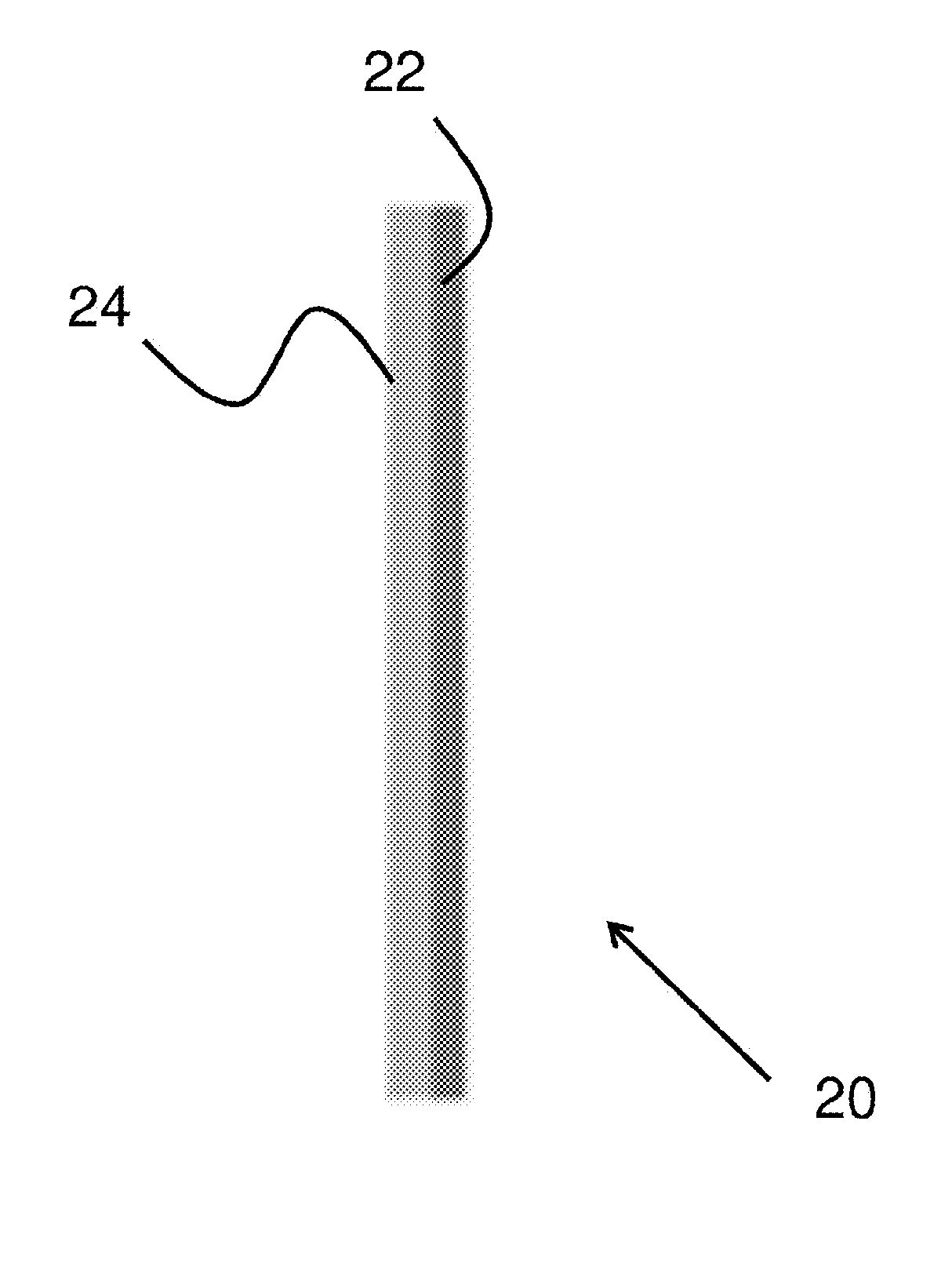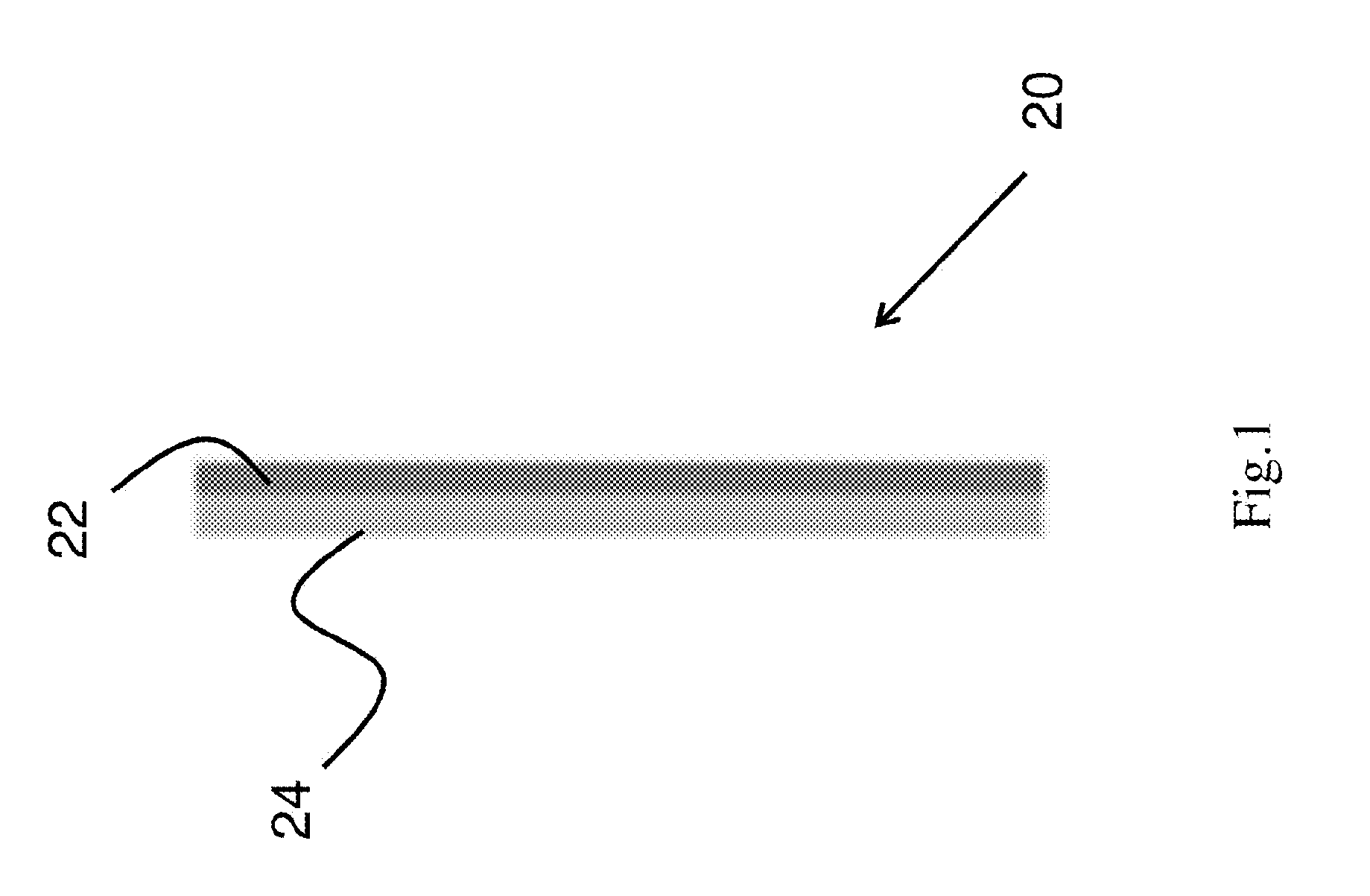Interlaced Filtration Barrier
a filtration barrier and interlace technology, applied in the field of polymer-based filtration barriers, can solve the problems that the barriers cannot effectively filter out most micron-sized particles and nanoparticles, and achieve the effects of reducing pressure drop, easy scaling up for large-scale production, and high filtration efficiency
- Summary
- Abstract
- Description
- Claims
- Application Information
AI Technical Summary
Benefits of technology
Problems solved by technology
Method used
Image
Examples
example 1
Filtration Barrier Including Nanofibers Interlaced with Microfibers
1.1 Structure of the Filtration Barrier
[0029]The first aspect of this invention, as shown in FIG. 1, relates to a filtration barrier 20 including a barrier layer 22 and a substrate layer 24. The barrier layer 22 includes an interlaced structure of polymer-based nanofibers and polymer-based microfibers in which nanofibers and microfibers bear electrostatic charges, whereas the substrate layer 24 is made of polymer-based microfibers. The barrier layer 22 is attached onto the substrate layer 24 via mechanical interlocking and electrostatic attraction.
[0030]In one embodiment, the perimeter of the barrier layer 22 can also be attached onto the perimeter of the substrate layer 24 via ultrasonic welding.
[0031]In one embodiment, the thickness of the barrier layer 22 ranges from 5 to 100 microns whereas the thickness of the substrate layer 24 ranges from 90 to 200 microns.
[0032]FIG. 2 shows the morphology of the interlaced st...
example 2
A Filtration Barrier Including a Nanofiber Layer and a Biocide Layer
[0062]In another aspect of this invention, a filtration barrier is described which includes two layers, nanofiber layer and biocide layer, attached to each other. The nanofiber layer is positioned distal to the air-flow direction and includes polymer-based nanofibers bearing positive electrostatic charge. The biocide layer is positioned proximal to the air-flow direction and includes polymer-based nanofibers crosslinked with biocides, in which a first reactive group in the polymer can covalently bind to a second reactive group of the biocide via a crosslinker.
[0063]In one embodiment, the nanofiber layer and biocide layer may further be attached to several fibrous layers.
[0064]On the biocide layer, trap particles can be trapped and kill bacteria can be killed on contact while with the presence of positive charges on the barrier layer, filtration of negatively charged particles such as most bacteria and viruses can be...
PUM
| Property | Measurement | Unit |
|---|---|---|
| porosity | aaaaa | aaaaa |
| diameter | aaaaa | aaaaa |
| diameter | aaaaa | aaaaa |
Abstract
Description
Claims
Application Information
 Login to View More
Login to View More - R&D
- Intellectual Property
- Life Sciences
- Materials
- Tech Scout
- Unparalleled Data Quality
- Higher Quality Content
- 60% Fewer Hallucinations
Browse by: Latest US Patents, China's latest patents, Technical Efficacy Thesaurus, Application Domain, Technology Topic, Popular Technical Reports.
© 2025 PatSnap. All rights reserved.Legal|Privacy policy|Modern Slavery Act Transparency Statement|Sitemap|About US| Contact US: help@patsnap.com



